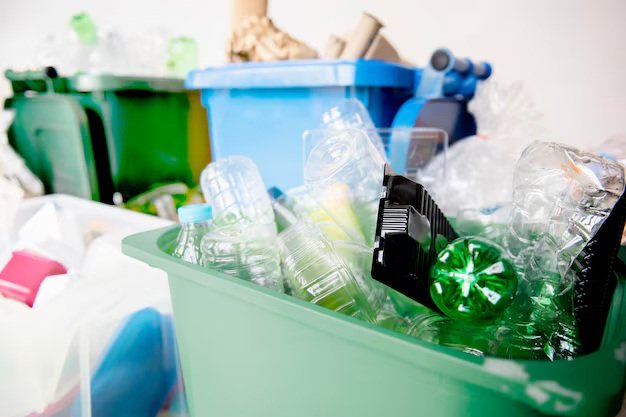How to Dispose of Carpet Properly Without Harming the Environment
Carpets can hold so many memories. From cosy movie nights with family to the excitement of redecorating your first home, they’ve seen it all. But when those once-loved carpets start to look worn or no longer fit your space, figuring out what to do with them can be tricky. Tossing them in the trash might seem like the easiest option, but it’s not the best choice for the planet. Did you know that millions of pounds of carpet waste end up in landfills every year? That’s a lot of material that could’ve been reused or recycled.
The good news is that there are smarter, more eco-friendly ways to say goodbye to your old carpets. Whether you’re upgrading a single room or tackling a larger renovation, this guide is here to help. It’s packed with simple tips, real-life stories, and expert advice to make the process easy and even rewarding. By understanding your options, you’ll not only reduce waste but also make choices that are kind to the environment and your wallet. Let’s dive in and explore how you can responsibly part ways with your carpets, because every small effort counts.

In This Article
- Responsible Carpet Disposal Methods
- 2. Reuse and Upcycle Ideas: Get Creative
- 3. Donating Usable Carpets: Share the Love
- 4. Selling Secondhand Carpets: Turn Trash Into Cash
- 5. Bulk Disposal and Municipal Services: When All Else Fails
Understanding Carpets: What They’re Made Of and Why It Matters
When you think about carpets, they’re more than just something soft underfoot. They’re actually a mix of different materials, each with its quirks. Some are synthetic, like nylon, polyester, or polypropylene. Others are natural, like wool or sisal. And while they look cosy on the surface, their construction—often held together by latex or other adhesives—can make them tricky to recycle.
Why Should You Care About Carpet Materials?
Here’s the thing: synthetic carpets don’t break down easily. If they end up in a landfill, they’ll stick around for hundreds of years. In the U.S. alone, people toss out about 4 billion pounds of carpet waste each year. That’s a staggering amount, and it’s a big reason why we need better ways to handle old carpets.
And then there’s the manufacturing process. Making carpets takes a ton of energy and pumps out a lot of emissions. Choosing to recycle or reuse them can cut down on that environmental footprint, giving those materials a second life instead of leaving them to rot—or not rot—in a landfill.
What’s in Your Carpet? A Quick Breakdown
| Material Type | Common Uses | Recycling Potential | Environmental Notes |
|---|---|---|---|
| Nylon | Residential & commercial carpets | High | Great for closed-loop recycling |
| Polyester | Affordable home carpets | Moderate | Often mixed with other materials, making recycling harder |
| Wool | High-end rugs & carpets | High | Biodegradable but less common |
| Polypropylene | Indoor/outdoor rugs | Low | Tough to recycle because it’s low-value |
By knowing what’s in your carpet, you can make smarter choices about what to do with it when it’s time to replace it. Every little bit helps when it comes to keeping waste out of landfills and giving materials a second chance.
Learn More: How to Dispose Waste Properly: A Guide to Proper Waste Management
Responsible Carpet Disposal Methods
In this section, we’ll explore practical, eco-friendly, and impactful ways to deal with your worn-out or unwanted carpets. From recycling to creative DIY projects, there’s a lot more to carpet disposal than you might think.
1. Recycling Carpets: Giving Old Materials a New Purpose
Recycling your carpet is hands down one of the best ways to dispose of it responsibly. Instead of clogging up landfills, those synthetic fibres and backing materials can be transformed into something new and useful. Imagine your old carpet becoming part of a roofing shingle, composite lumber, or even industrial flooring. Pretty cool, right?
How to Recycle Carpets
So, how do you get started with recycling? Here’s a step-by-step guide:
- Find a Facility:
- If you live in the U.S., the Carpet America Recovery Effort (CARE) is your go-to resource. They have a handy website where you can search for recycling facilities near you.
- If you’re outside the U.S., don’t worry. A quick online search or a call to your local waste management office can point you in the right direction.
- Prepare Your Carpet:
- Remove any staples, nails, or adhesive materials from the carpet.
- Cut and roll it into manageable sections.
- Reach out to the facility to check their specific guidelines and fees. On average, it costs $0.05–$0.25 per pound to recycle carpet. A small price to pay for reducing waste!
Real-Life Story: The Green Family’s Recycling Success
Take the Green family from Oregon, for instance. They were remodelling their living room and didn’t want their old nylon carpet to end up in a landfill. After a quick search on CARE’s website, they found a local facility that could take it. They were thrilled to learn that their carpet would be repurposed into materials for car parts and new flooring. By recycling over 500 square feet of carpet, they prevented 200 pounds of waste from entering the landfill. Now that’s a win-win!
Why Recycling Matters
Still on the fence? Here are some quick stats:
| Material Type | Recycling Potential | Environmental Benefits |
|---|---|---|
| Nylon | High | Keeps valuable resources in the loop |
| Polyester | Moderate | Reduces dependency on virgin materials |
| Polypropylene | Low | Harder to recycle but still possible |
| Wool | High | Biodegradable and often reused directly |
2. Reuse and Upcycle Ideas: Get Creative
Before you toss that carpet, think about how it could serve a new purpose around your home. You’d be surprised at how versatile an old carpet can be! Here are some fun and practical ideas:
- Furniture Pads: Cut the carpet into small squares and place them under heavy furniture to protect your floors.
- Soundproofing: Use carpet sections on walls in music rooms or kids’ play areas to dampen noise.
- Pet Accessories: Turn it into a scratching post for your cat or a comfy bed for your dog.
- Car Mats: Create durable, easy-to-clean mats for your car, garage, or workshop.
Pro Tip from an Expert
“Repurposing old materials is one of the simplest ways to reduce environmental impact. With a little creativity, your carpet can have a second life,” says Jessica Green, a sustainable interior designer.
3. Donating Usable Carpets: Share the Love
If your carpet is still in good shape but you’re ready for a change, why not donate it? Many organisations and charities welcome donations of gently used carpets, and your contribution can make a big difference for someone in need.
Where to Donate
- Habitat for Humanity ReStores: These stores accept gently used carpets and resell them to fund affordable housing projects.
- Local Charities: Think Goodwill or other community organisations. Just make sure the carpet is clean and in decent condition.
- Schools and Nonprofits: Reach out to local schools or nonprofits that might use your carpet for crafts, projects, or even decor.
Amy’s Story: A Donation That Made a Difference
When Amy Jackson replaced her living room carpet, she didn’t just toss the old one. Instead, she donated it to a local animal shelter. The shelter used the carpet to make cosy bedding for their rescued dogs. Knowing her carpet found a new home made the whole process more rewarding.
4. Selling Secondhand Carpets: Turn Trash Into Cash
If your carpet is relatively new or high-quality, selling it secondhand is a great way to recoup some of your investment. Plus, someone else gets to enjoy it!
How to Sell Your Carpet
- Online Marketplaces: Try platforms like Craigslist, Facebook Marketplace, or eBay.
- Local Thrift Stores: Partner with second-hand furniture or decor shops.
Tips for a Successful Sale
- Clean It Up: Give your carpet a good cleaning and deodorise it to make it more appealing.
- Take Great Photos: Good lighting and clean angles can make all the difference.
- Be Honest: Share accurate measurements and details about the carpet’s material and condition.
5. Bulk Disposal and Municipal Services: When All Else Fails
Sometimes, recycling or repurposing isn’t feasible. In those cases, bulk disposal might be your best option. Many municipalities offer bulk pickup services for larger items like carpets.
Steps to Take
- Check Local Regulations: Reach out to your local waste management office to learn about rules and fees for bulk pickup.
- Prepare the Carpet: Roll it up, secure it with tape, and label it if necessary.
- Schedule a Pickup: Keep in mind that bulk pickups might only happen on specific days, so plan ahead.
Cost Breakdown
| Carpet Size (sq. ft.) | Approx. Weight (lbs) | Average Pickup Fee ($) |
| 100–200 | 25–50 | $15–25 |
| 300–400 | 75–100 | $35–50 |
| 500+ | 125+ | $50+ |
The Future of Carpets: Moving Towards a Circular Economy
A circular economy for carpets is on the horizon, and it could change the way we think about flooring.
So, what exactly is a circular economy? In simple terms, it means designing products—in this case, carpets—so they can be reused or recycled, instead of being thrown away. Imagine a world where your old carpet doesn’t just become trash but gets transformed into something new, like another carpet or even something entirely different.
Learn More: How to Dispose of Gasoline Properly: Expert Guide and Insights
Innovative Programs Making a Difference
Interface’s ReEntry Program
Interface, a company that’s big on sustainability, has a program called ReEntry. They’ve figured out how to take old carpet tiles and recycle them into new ones. It’s a brilliant way to keep materials in use and out of landfills. By doing this, Interface not only saves raw materials but also reduces the energy and emissions needed to make new carpets from scratch.
Shaw’s Evergreen Nylon Recycling
Another standout is Shaw Industries and its Evergreen Nylon Recycling program. This initiative focuses on nylon carpets. They’ve developed a process to break down old nylon carpets and turn them into raw materials for new products. This kind of closed-loop recycling is a game-changer because it creates a continuous cycle of reuse.
Both programs show what’s possible when companies get creative and take responsibility for their products. Imagine if more manufacturers joined in—we’d have far less carpet waste and a lot more recycled materials.
How You Can Help
Now, you might be wondering, “What can I do to make a difference?” The truth is, there are a few simple steps you can take to support this shift toward sustainability:
- Know Your Carpet’s Composition: When you’re buying a new carpet, check the label. Is it made from recyclable materials? Some carpets are designed with sustainability in mind, making them easier to recycle later on. Knowing what you’re dealing with can help you make better choices.
- Plan Disposal Before Renovation: Before you start ripping up your old carpet, take a moment to research your options. Are there recycling facilities nearby? Could you donate it if it’s still in good shape? Planning ahead makes it easier to avoid sending your carpet straight to the dump.
- Invest in Longevity: Think long-term when buying new carpets. Durable, eco-friendly carpets made from recyclable or biodegradable materials may cost a bit more upfront, but can save money and resources in the long run. Plus, they’re better for the planet.
- Engage with Your Community: Many communities have recycling programs or bulk waste pickup days. Get involved! You can also advocate for better recycling infrastructure in your area. The more people demand sustainable options, the more likely they are to become available.
A Brighter Future
The idea of a circular economy for carpets might feel like a big leap, but it’s entirely possible. Studies like those from the Environmental Technology & Innovation Journal show that recycling carpets can significantly reduce waste and resource use. Programs like Interface’s and Shaw’s are leading the way, proving that sustainability isn’t just a buzzword—it’s a real, achievable goal.
Every small step you take—whether it’s choosing a recyclable carpet, donating an old one, or supporting companies that prioritise sustainability—helps build momentum toward a future where carpets don’t end up as waste but as part of a continuous cycle of use and renewal. And that’s a future worth stepping into.







